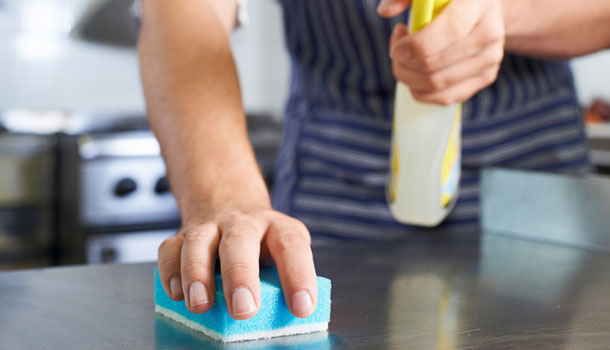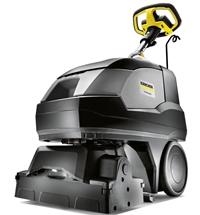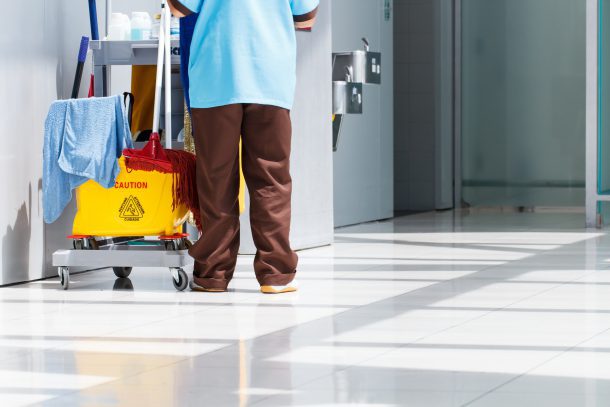
Daniel Balas highlights the importance of knowing the overall costs of cleaning and how it may affect your organisation.
In the hospitality sector, where maintaining the right image is everything, implementing a new cleaning system requires careful evaluation of many factors and long-term costs – not simply product performance, usability and features.
There are other considerations that may not be immediately obvious. With any long-term investment, such as cleaning systems, there are ongoing costs. These include consumable components, replacement parts plus ongoing maintenance costs.
There will be complementary processes, like laundering, recycling or waste disposal. Then there are considerations such as the reliability of supply and whether product training and after-sales support is readily available and included as part of the service. It’s a complex calculation with many variables.
The appearance and cleanliness of a property can have an impact on guest experience and reputation, so it makes sense to research the latest technology advancements and invest wisely.
Selecting the best solution – in terms of choosing the right cleaning technologies, methods, products and partner – requires attention to every aspect of the cleaning cycle from start to finish.
Looking only at the upfront investment may not reveal the full picture. There are short- and long-term aspects of the cleaning process that add up to the total cost of ownership over the lifetime of your cleaning system. Cutting corners on the decision-making process today can create a financial burden in the future.
Looking at the cleaning methods and processes set in place, plus the size or the property and staffing resources can determine which system will be most cost effective and deliver the best outcomes in terms of cleaning performance and productivity.
For example, different cleaning equipment involves different methods and may add more steps in a cleaner’s workflow. Heavy equipment may significantly slow the operator down, reducing their productivity.
Also, if some harsh chemicals are used, it may reduce the lifespan of cleaning equipment; mop heads and cleaning cloths deteriorate more rapidly when soaked regularly in harsh chemicals meaning these have to be replaced more regularly.
It quickly becomes apparent that some practices which may represent an upfront saving in the short term, later costs much more when equipment needs to be replaced more often or requires large quantities of consumables (like chemicals and water).
What is not always considered are the costs associated with productivity and the guest experience, yet these can dramatically impact the return on investment. These hidden costs are not immediately obvious, but may become significant over time.
For example, the unintended consequences of high chemical use can be severe for staff who are exposed on a daily basis to dangerous fumes and skin irritants. If high volumes of water are used to clean floors, wet floors become a dangerous slip hazard and limit staff and guest access until floors are dry.
Work-related injuries like a shoulder or lower back strain caused by lifting heavy equipment like buckets of water impact productivity, team morale and the bottom-line. Repetitive strain injuries impact an employee’s productivity too and can worsen over time.
These are just a few examples for real situations for decision-makers in the hospitality sector. Understanding the role of cleaning equipment in improving workplace health and safety could potentially reduce business WHS costs and risks.
One of the biggest myths in commercial cleaning is that the best way to clean thoroughly is with lots of harsh chemicals. We now know that any amount of chemicals is hazardous and needs to be reduced, so we should rely more on the fibres contained within a cloth or mop to do the majority of work, especially when it comes to scrubbing and removing dirt and germs.
Our over-reliance on chemicals in the cleaning process is known to be harmful for our health and the environment. Research by the University of Canterbury comparing their chemical cleaning regime versus chemical free cleaning[1] supports the view that harsh chemical cleaning products have serious effects on the environment, people and wildlife.
What’s more, the practice of using high grade levels of chemicals for cleaning may in fact be counterproductive as they leave traces of chemicals which lead to chemical-resistance and provide the perfect breeding ground for other microbes.
Chemical-intensive cleaning processes require high volumes of water, presenting a large hidden cost for a property. Chemicals are also costly so can add significantly to the ongoing daily cleaning costs. Buckets of water and chemicals need to be changed regularly. If using a 15 litre mop bucket this means huge waste and money down the drain.
Ideally, chemicals should be reduced and the fibres of the cloth and mop should do most of the job of scrubbing, and removing dirt, particles and germs.
New advancements in the microscopic composition of fibres, specifically superior microfibre, have a proven ability to attract and ‘grab hold’ of tiny particles that traditional fibres just push around a surface.
This technology is paving the way for new methods of cleaning. With the ability to lift even the smallest particles, microfibre technology allows the cleaning to be performed in a single step, speeding up the workflow for staff. It uses much less chemicals and water to achieve a hygienic clean in a single step, so drying time is reduced – leaving floors and surfaces touch-dry faster.
As a more effective cleaning product, microfiber increases workflow efficiency for staff. Plus, with the longevity of this product over hundreds of laundering cycles, lower lifetime costs will be significant.
When evaluating the overall costs of cleaning, it’s key to evaluate every aspect of investment – from product durability, performance, staff productivity, WHS, sustainability to ongoing maintenance costs. Considering every angle will provide a complete picture of the financial value and avoid a hefty financial burden to the bottom-line.
*Daniel Balas is a national account manager at Rubbermaid Commercial Products
[1] Comparing the current chemical cleaning regime and chemical-free cleaning at the university of Canterbury: A report and practical microbiological experiment for the sustainability office




Gary Oskay on: Industry Leaders Forum: Wayne Hill, CEO, RapidClean Group
John Ford on: Industry Leaders Forum: Joe Camilleri, Managing Director, Central Cleaning Supplies
Jasmine Soh on: Empowering the Oceania Cleaning and Hygiene Industry: INCLEAN Unveils Its Unified Magazine